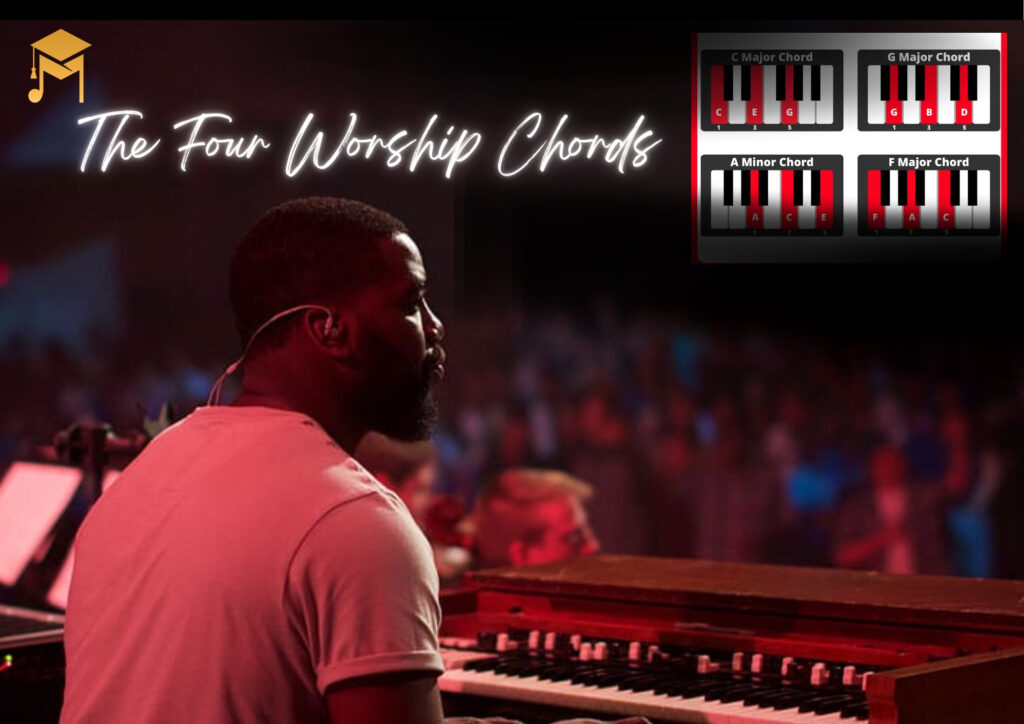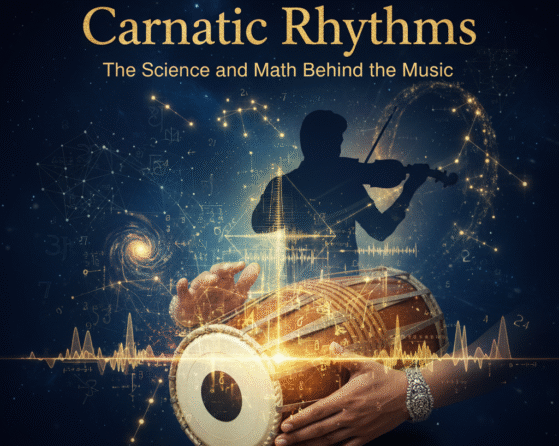The Four Worship Chords
In worship music, certain chords form the bedrock of countless songs, creating the emotional and spiritual foundation that resonates deeply with congregations worldwide. Known as the “Four Worship Chords,” these essential chords actively equip musicians to craft worship experiences that both inspire and uplift. In this blog, we’ll explore these chords, dive into their significance, and uncover how musicians can use them effectively in worship settings.

Understanding the Four Worship Chords
The Four Worship Chords, widely used in contemporary worship music, are celebrated for their versatility, emotional impact, and seamless blending across different musical styles. Specifically, these chords include:
- C Major (I)
- G Major (V)
- A Minor (vi)
- F Major (IV)
Together, they create a powerful progression that can easily be adapted to fit a variety of worship songs. By understanding how these chords function and how they work together, you’ll be better equipped to master worship music and apply them effectively.
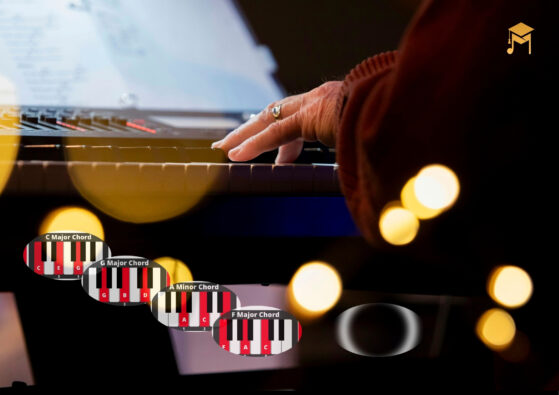
The Significance of Each Chord
1. C Major (I)
The C Major chord, often called the tonic, provides resolution and stability. It starts many worship songs and serves as the home base from which other chords create movement. In worship music, C Major evokes peace and reassurance, making it perfect for opening songs and moments of reflection.
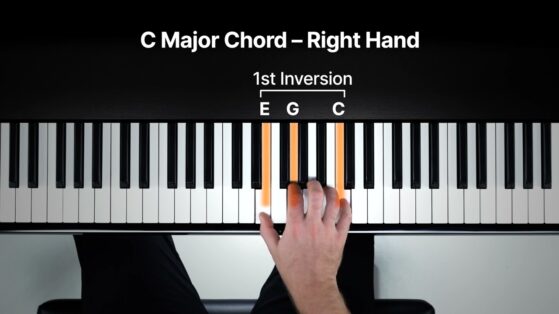
2. G Major (V)
The G Major chord is known as the dominant chord. It creates tension and drives the progression forward, leading naturally back to the tonic C Major. This tension-and-release effect is crucial in maintaining the dynamic flow of worship music, helping to build anticipation and resolve musical phrases.
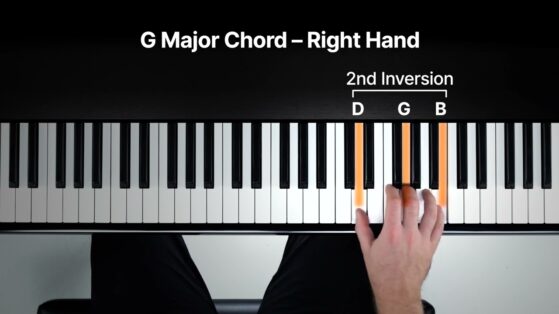
3. A Minor (vi)
The A Minor chord, the relative minor of C Major, adds depth and emotional complexity to worship music. It introduces a melancholic or introspective quality that contrasts with the brighter sound of the major chords. This chord is often used to convey themes of longing, repentance, or reflection, enriching the worship experience with a nuanced emotional palette.
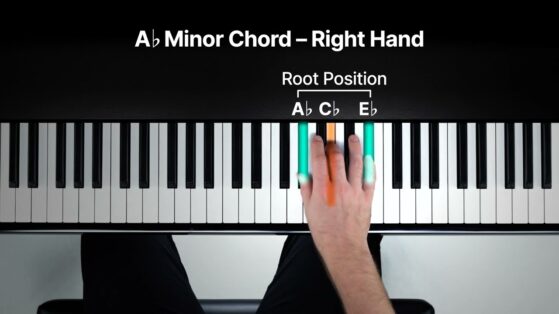
4. F Major (IV)
The F Major chord, also known as the subdominant, offers a sense of movement and transition between the tonic and dominant chords. It helps to create a smooth flow in the progression, adding a layer of harmonic richness. In worship music, the F Major chord can be used to support transitions between different sections of a song or to provide a fresh perspective within a familiar progression.
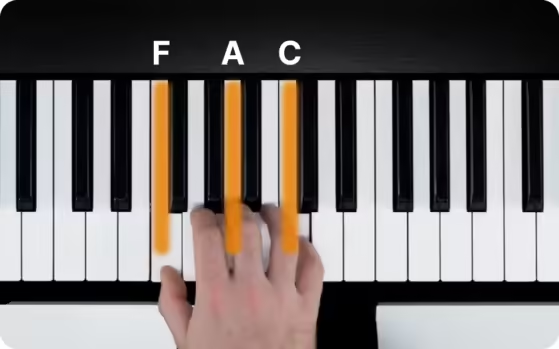
Applying the Four Worship Chords
Songwriting and Arrangement
When composing worship music, you can arrange these chords in various sequences to create different emotional effects. For instance, a common progression is C-G-Am-F, which forms the basis of many popular worship songs. Additionally, experimenting with different orders and rhythms can yield unique results. Thus, this experimentation helps you craft songs that truly resonate with your audience.
Playing and Performance
For musicians, mastering these chords on the piano or guitar is essential. Practice chord transitions and experiment with different voicings to enhance your performance. Additionally, use dynamics and rhythm to highlight the emotional content of the chords, improving your connection with worshippers.
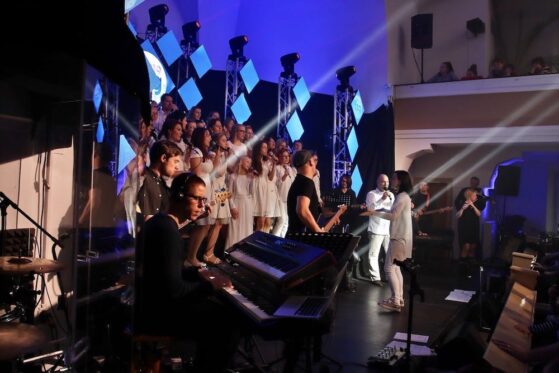
Worship Leading
As a worship leader, incorporating these chords into your set list helps create a cohesive and engaging worship experience. Knowing when to use each chord and how to transition between them enhances the flow of your service, building a deeper connection with your congregation.

Conclusion
The Four Worship Chords—C, G, Am, and F—form the core of contemporary worship music, offering both versatility and emotional depth. These essential chords empower songwriters, performers, and worship leaders to craft music that is not only musically engaging but also spiritually uplifting. Whether you’re an experienced musician or just beginning, mastering these chords will strengthen your connection with your audience and elevate your worship practice, allowing you to create music that truly resonates with the heart of worship.


